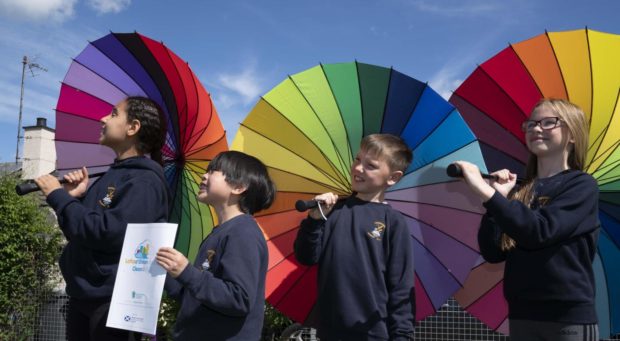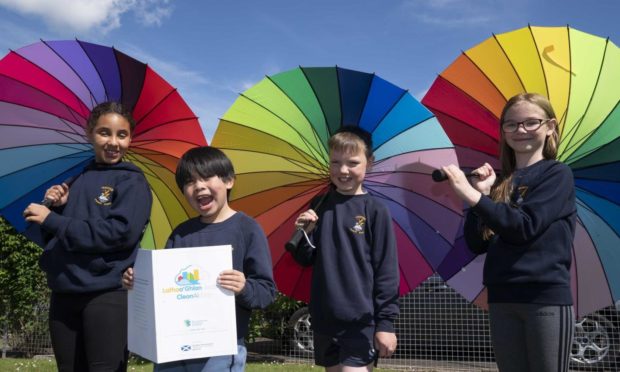Youngsters in Angus and Fife are taking part in this year’s Clean Air Day as new research suggests millions of school pupils across the country are breathing in “hazardous” levels of pollution.
Pupils in Southwood and Rimbleton primary schools, both in Glenrothes, have received sensors that will help them measure air pollutants where they learn.
It is hoped this will increase awareness and reduce the use of cars on the school run.
New research by EarthSense reveals more than a quarter of schools in the UK are near areas that breach World Health Organisation (WHO) air pollution levels.
In Angus, pupils have set up an “exclusion zone” at Ferryden Primary School, on the outskirts of Montrose.
The 18 month trial will see vehicles banned from the street during term time, with the exception of residents, emergency vehicles and blue badge holders.
Muirhead in Arbroath and Langlands in Forfar have set up similar zones in recent weeks.
Will banning cars help?
Ferryden head teacher Michelle MacKay said the initiative has already cut down on traffic.
“[It is] making it much safer for the children and our families,” she said.
“It is helping promote the message to reduce air pollution with our whole school community.”
British engineer firm Ricardo is sending clean air sensors to the Glenrothes schools.
Eloise Griffin, technical officer with Fife Council’s environmental department, hopes the lessons of Clean Air Day stay with the youngsters.
“Hopefully they take what they learn home with them and that can encourage families to make changes. There are a lot of little bits that people can do.
“Having that interactivity should encourage children to get involved and think about their environment.
“Hopefully that can be taken home and they apply it long term.”
‘Get their hands on them’
Susannah Telfer, senior consultant with Ricardo, is delivering a digital presentation to the Fife schools on the importance of air quality.
She said: “It would be great to be there in person, but that’s not possible of course. But we can talk about little changes their family can make that will make improvements.”
She also hailed the interactivity of the sensors.

“They get to get their hands on them and see the results.
“They can learn about the importance of clean air by learning about what is going on around them.”
Dangerous pollutant levels
An estimated 3.4 million children are breathing in dangerous levels of air pollution in the country while at school.
The data, collected by EarthSense, found that about 27% of schools in the UK are in areas where air pollution levels breach WHO recommendations.
Dr Maria Neira, director at WHO, said the figures are “unequivocally too high” and are harming children’s health.
“Schools should be safe places of learning, not places where students are at risk of health hazards.”












